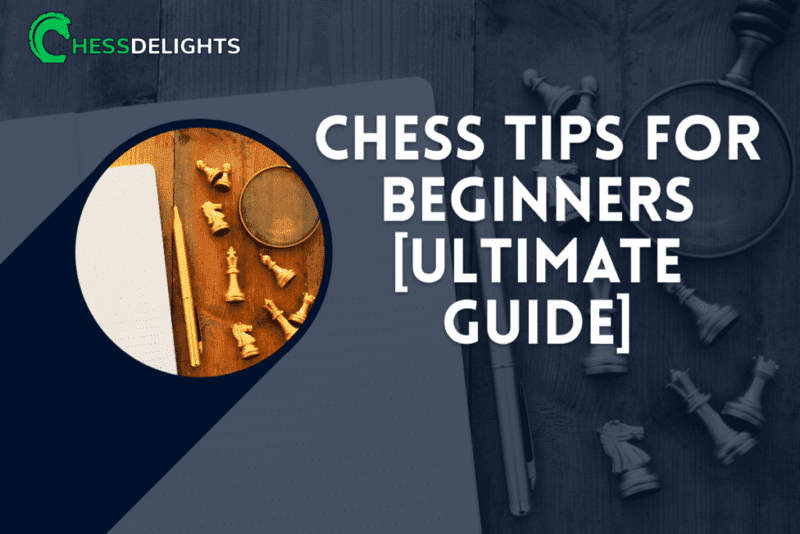Hi there, I want to share some of the most common questions beginners ask in chess…
You can refer to this as a general knowledge question, which you can check out anytime you want!
If you're just getting started, you should learn about proper chess board setup.
We are going to discuss chess questions regarding best opening, can you move Knight first, chess moves and more.
So, in this article, you are going to find out 5 of the most common beginner's questions in chess…
1. What is the best opening in chess?
If you are a chess player and you've been asking yourself this question, today we offer you the answer based on real knowledge and experience in this great game. First of all, there's no one correct answer, and it's that your first move should be aligned with your playing style: There's the tactical style and the strategical style, and for these, there are several “openings” you could apply. Up next I'll leave you a list with the most famous openings in chess:
Each of these openings has in common that they all start by moving a pawn, e4, c4, and d4, respectively, so for now, let's forget the rest of the pieces in our search for the best opening move. This doesn't mean that you can't start with something different than a pawn, but the basic seems to tell us that what best suits our first move is a pawn.
2. What is the first move in the chess openings mentioned above?
- Italian game: This is probably the most known opening in chess, and it begins with the move e4, and it continues to develop moving our Knight (f3) and bishop (c4) on the right flank, for then castling on the fourth move. It's usually said to be for beginners, but the truth is several top players use it nowadays.
- English opening: A very strategical style of play. It begins with c4. It's a well-balanced opening, based a little bit more on defense at the start. The next moves are intended to play passively, like g3, Bg2, and Nf3. It relies massively on controlling the board from away with the bishops.
- Queen's pawn: As its name says, the first move in this opening is d4. It's one of the most used openings in chess, and it will demand from the opponent a well-thought defense, the other way, it may lose the game quickly. It follows a similar structure of play like in the Italian game.
Very well, we have now reduced the answer to our question to three options: e4, c4, and d4. They are all excellent choices, but if you are still trying to find your style of play inside chess, the next tips will help find the option that best suits you.
Most commonly, chess players are classified by their aggressiveness when playing; therefore, you need to know what opening move can bring the best out of your game.
If you are entering the world of chess, you should start with e4, that is to say, the Italian game.
This opening will secure you a balanced game, it will be difficult for your opponent to attack you, which will give time to draw your strategy for a bit more time, but on the other hand, you'll see probably not so many windows to attack the same way.
The good news? In the Italian game, castling it's an obligation, so your king will be safe until the last stages of the game.
With this opening, you must try to do good exchanges, and if you are not able to, you have to option to drop some of your pieces to defend and counter-attack.
For those players who don't like that much to attack at the very beginning or lead the first stages of the game, you have to try the English opening, and if you allow me…
I would say every chess player should master the English opening. Its style of play takes you one step higher in your game level, and if you feel identified with it, you won't be able to stop playing it.
It introduces you to some new concepts of the game, just like “Fianchetto,” something different, but at all bad, of what you may already know about playing chess.
Also, it may probably take to surprise your rival, and it will demand a quick-adjust that you can capitalize later in the game.
It's a flexible opening highly recommended for middle-high level players, with the disadvantage that could sometimes leave in a position difficult to understand.
For last, as said already, starting with d4 represents an intelligent, bold first move in chess. We can talk about it as a middle point between the previous two openings.
It's not so defensive, so you have to wait for your opponent to attack first, but in no way leaves you with a wrong defensive position.
Another strong point in favor of this opening is that it forces a d5 defensive response in most opportunities, which, if it's not one of the strong sides of your rival's game, will give you quick lead on the board.
And this is why starting with d4 is my recommendation for what chess piece one should move first. The downside of this opening is that it usually develops a slow game, leading to a lot of draws.
3. Can you move your Knight first in chess?
Although it's something rare, not every chess game must start with a pawn.
Sometimes players begin with their knights to give their rivals the lead of the play; that's when players feel more comfortable with defending rather than attacking.
And they do this because knights are moved sooner than later in every opening or defense, so they are not wasting a move.
Also, because it will help them castling quickly, another reason for not to start with one of you end pawns such as a3/a4 or h3/h4.
But this is not everything about this opening, a lot of players move their knights first because it allows them to dominate the center of the board indirectly, a concept we have not looked so far.
One of the main reasons why e4 and d4 are the most popular choices when players start, it's because they directly take possession of central squares, a smart way to attack, and at the same time, to defend our side of the board.
And also we can indirectly do this, that is by threatening the central squares with what could be our next move, for example, when we start with c4, our pawn indirectly owns d5 box. and in the same way, we can begin with one of our knights to f3 or c3, avoiding your opponent to play in the two central squares.
Of course, if we are to apply this bold Knight move, we will have to support him quickly in order not to lose any exchanges.
4. How do you know who goes first in chess?
Since ancient times, chess is played with dark and light pieces, being the latter the ones to recently starting the game.
So, in current days, where the majority of the chess set are made of white and black pieces, the white ones will start the game.
But there's is a rule to determine in what side of the board each set of pieces are located, and that's by finding the side in which letters can be read from left to right in the correct order (from A to H), and in that side, the white or light pieces shall be placed.
Nevertheless, it has not been this way since the beginning of chess. Hundreds of years ago, black used to go first, and since then has been a topic of discussion.
You could also hear a couple of stories saying that for ancient players, black was the lucky color in chess, so it would be too much of an advantage to start the game.
5. What moves does each chess piece make?
There are six different pieces in chess, and those are Pawn, Rook, Knight, Bishop, Queen, and King. Every one of them has a particular way to move inside a chess game:
- Pawn: It moves straight forward one square or two squares only one time when it's in its initial square. It can also move one square forward in diagonal to any side, for when it's able to capture an enemy's piece. The value in points of a pawn inside the game is one (1).
- Rook: It moves in a straight line, as much as free squares there are, no matter what direction. Also, it takes part in the mentioned “Castling” play along with the king. Its value inside the game is five (5).
- Knight: It moves one square forward and one square in diagonal or vice versa every time, and it's allowed to jump over any piece in his way. His movement often looks like an “L.” It has a value of three (3) points.
- Bishop: It moves diagonally as many vacant squares there are in a straight line. It's value alike the Knight is of three (3) points.
- Queen: The most useful piece inside the game. It moves in every direction as many squares are free in a straight line. Its value is of nine (9) points.
- King: Just like the queen, it moves in any direction, but with the limited that it can only do it one square at a time. Along with the rook, it participates in a special move called “Castling.” When the king is captured, the game ends.
Wrapping Up
I hope this article helped you get the answers you are looking for…
This post was meant to be used as a resource for common questions that you may have in chess. The best chess openings, what are the first moves with those best openings, moving Knight first, who goes first in chess and chess moves of each chess piece.
Do refer to this article whenever you need it, bookmark this post, or share this with your friends and family who are also interested in chess. Again, have fun learning chess! 🙂





